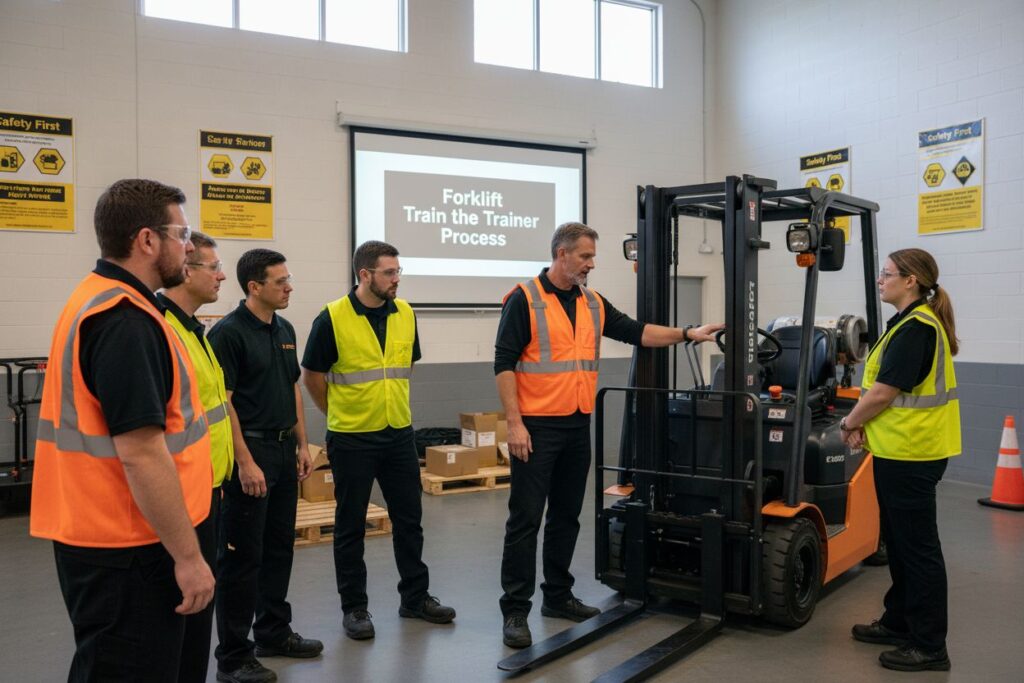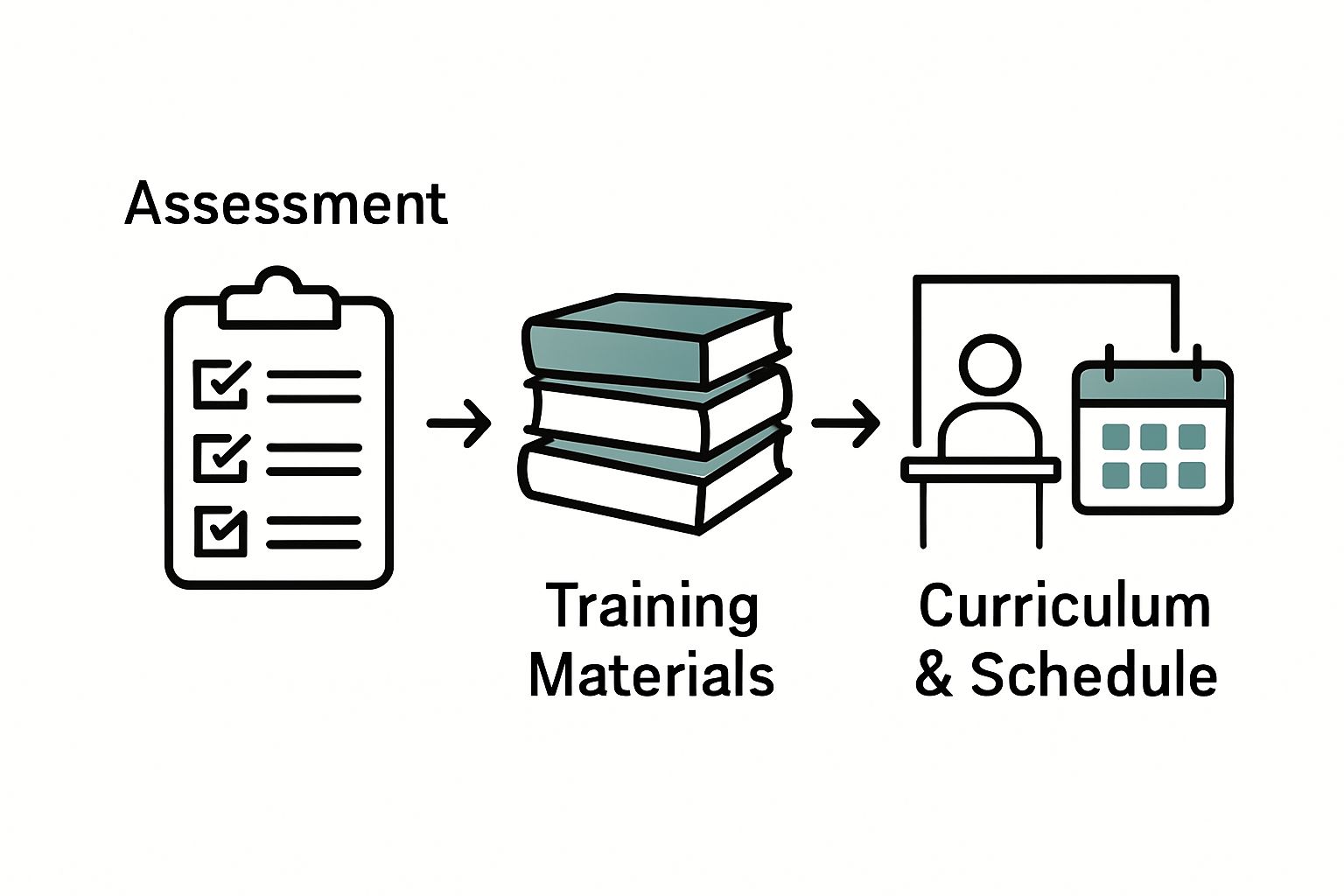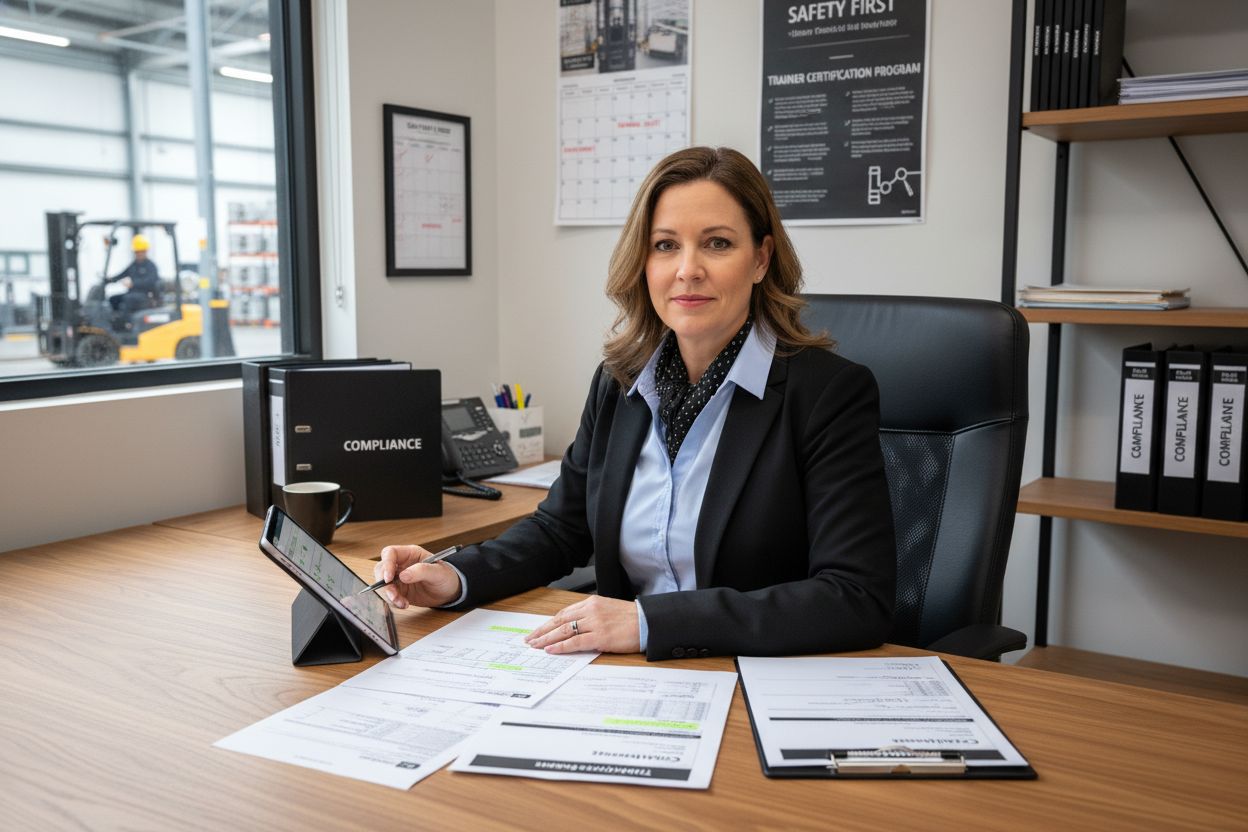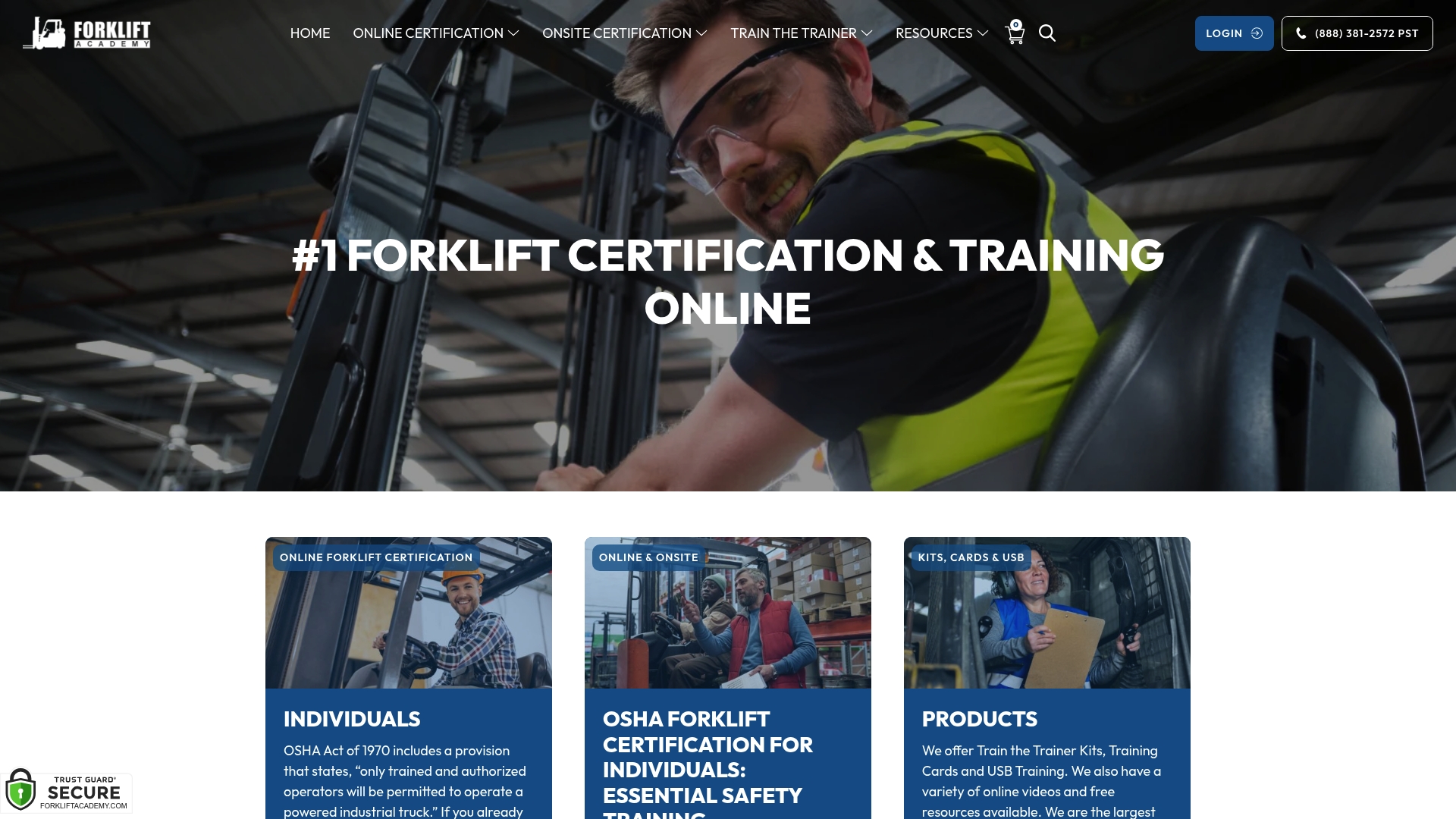
Getting forklift trainers certified takes more than just filling out forms or handing out manuals. OSHA can fine companies over $14,000 for non-compliance on forklift training alone, and most businesses still miss key safety risks in their initial prep. Most people expect the hard part to be the training session itself, but the real secret is that the most successful programs always start long before anyone steps into a classroom. It all comes down to how you assess, gather, and update your training at every stage.
| Key Point | Explanation |
|---|---|
| 1. Assess Training Needs Thoroughly | Conduct a detailed analysis of current operations, equipment, and safety risks to customize the training program. |
| 2. Gather Diverse Training Materials | Compile written guides, visual aids, and hands-on resources to provide a comprehensive learning experience for trainers. |
| 3. Develop a Structured Curriculum | Create a logical framework that balances theory with practical skill development, ensuring alignment with safety standards. |
| 4. Conduct Interactive Training Sessions | Engage potential trainers through hands-on practice and scenario-based learning to enhance instructional capabilities. |
| 5. Implement Continuous Training Updates | Regularly review and update training materials to stay compliant with safety regulations and incorporate new technologies. |
The initial phase of the forklift train the trainer process involves a comprehensive assessment of your organization’s specific training requirements. This critical step establishes the foundation for developing an effective training program that meets OSHA compliance standards and addresses the unique operational dynamics of your workplace.
Begin by conducting a thorough workplace analysis that examines your current forklift operations, equipment types, and potential safety risks. Learn more about training program development to understand the nuanced approach required for effective trainer certification. You’ll need to evaluate several key factors including the specific types of forklifts used, workplace environmental conditions, existing operator skill levels, and potential hazards inherent to your operational environment.
Your assessment should include a detailed review of current operator performance, incident history, and existing safety protocols. Identify specific skill gaps by reviewing accident reports, near-miss incidents, and performance evaluations. Pay special attention to areas such as load handling, navigation in confined spaces, maintenance procedures, and operational efficiency. Documenting these findings is crucial for developing a targeted training curriculum that addresses real-world challenges specific to your organization.
Key elements to examine during your needs assessment include:
Successful completion of this step means you have a comprehensive understanding of your organization’s training needs, enabling you to design a precise and effective forklift train the trainer program that enhances workplace safety and operational competence. The insights gathered will directly inform the subsequent steps of developing a targeted training curriculum and selecting appropriate instructional methodologies.

By meticulously assessing your training requirements, you create a solid foundation for a robust forklift operator training program that goes beyond basic compliance to truly improve workplace safety and operational efficiency.
With your initial needs assessment complete, the next critical phase of the forklift train the trainer process involves assembling comprehensive training materials and resources. Explore our comprehensive training resources to understand the depth of materials required for an effective program. This step transforms your assessment insights into actionable training content that will equip future trainers with the knowledge and skills necessary for successful forklift operator certification.
According to workplace safety research from NIOSH, developing a robust training toolkit requires a strategic approach that combines theoretical knowledge with practical demonstration materials. Your training resource collection should encompass multiple learning modalities, including written instructional guides, visual presentation materials, hands-on equipment guides, and practical assessment tools.
Start by compiling comprehensive documentation that covers critical areas such as forklift operational procedures, safety protocols, equipment maintenance, and workplace risk management. Develop or acquire training manuals that provide detailed explanations of forklift mechanics, operational techniques, and industry-specific safety standards. These resources should be clear, concise, and tailored to the specific types of forklifts and workplace environments identified in your initial assessment.
Key training materials to gather include:
Beyond traditional documentation, invest in multimedia resources that enhance learning engagement. Consider incorporating video demonstrations, interactive digital modules, and scenario-based training simulations that allow trainers to effectively communicate complex operational concepts. Ensure all materials align with current OSHA regulations and reflect the most recent safety standards in industrial equipment operation.
Successful completion of this step means you have a comprehensive, versatile training toolkit that provides trainers with the resources needed to deliver high-quality, engaging, and compliant forklift operator training. The materials you gather will serve as the foundational framework for developing a robust and effective training curriculum.
The following table summarizes essential materials and resources to collect for an effective forklift train the trainer program, outlining their purpose and usage within the process.
| Training Material | Purpose | Usage Example |
|---|---|---|
| Operator Instruction Manuals | Provide detailed operating guidance | Reference during classroom instruction |
| Safety Procedure Documentation | Outline required safety protocols | Used for safety training modules |
| Visual Training Presentations | Enhance understanding with visuals | Slideshows and diagrams |
| Equipment Operation Checklists | Ensure operational readiness | Used during hands-on demos |
| Risk Assessment Templates | Identify and manage hazards | Conducting workplace safety analysis |
| Performance Evaluation Frameworks | Assess skill and knowledge acquisition | Grading participant performance |
| Video Demonstrations/Simulations | Show practical operations visually | Used in blended or digital learning |
Developing a structured training curriculum and schedule represents the pivotal transformation of your gathered resources into a comprehensive learning pathway. Learn about effective training curriculum design to understand the intricate process of creating an impactful training program. This step requires careful orchestration of learning objectives, practical demonstrations, and assessment strategies that align with both OSHA requirements and your organization’s specific operational needs.
Begin by constructing a detailed curriculum framework that breaks down forklift operator training into logical, progressive modules. Your curriculum should incorporate theoretical knowledge and practical skill development, ensuring a holistic approach to operator education. According to workplace training research, the training must comprehensively cover equipment-specific operations, safety protocols, workplace hazard recognition, and hands-on operational techniques.
Curriculum design demands a strategic approach that balances classroom instruction with practical training scenarios. Develop modules that progressively build operator competence, starting with fundamental safety principles and advancing to complex operational scenarios. Each module should include clear learning objectives, detailed instructional content, practical demonstration guidelines, and specific assessment criteria. Consider creating flexibility within the curriculum to accommodate different learning styles and operational contexts.
Key curriculum development considerations include:
Scheduling represents another critical aspect of curriculum development. Design a training timeline that allows sufficient time for comprehensive learning while maintaining operational efficiency. Consider potential training formats such as full-day intensive sessions, modular evening classes, or blended learning approaches that combine online theoretical instruction with in-person practical training. Ensure the schedule provides adequate time for both theoretical instruction and hands-on equipment familiarization.
Successful curriculum and schedule development means creating a structured, flexible learning pathway that equips potential forklift trainers with the knowledge, skills, and confidence to deliver high-quality operator training. The curriculum you develop will serve as the strategic blueprint for transforming individual operators into competent, safety-conscious professionals.
The forklift train the trainer session represents the critical moment where theoretical preparation transforms into practical instructional capability. Explore our hands-on certification options to understand the depth of practical training required. This pivotal stage demands a comprehensive approach that combines interactive instruction, practical demonstration, and rigorous skill assessment.
According to workplace safety research from NIOSH, effective train the trainer sessions must incorporate interactive teaching techniques that engage participants and facilitate deep learning. Begin the session by establishing clear expectations and reviewing the comprehensive curriculum developed in previous steps. Create an environment of active participation where potential trainers can ask questions, share experiences, and critically analyze safety protocols and operational procedures.
The session should seamlessly blend theoretical instruction with practical skill demonstration. Allocate specific time for detailed content presentation, covering equipment mechanics, safety regulations, operational techniques, and risk management strategies. Encourage participants to engage with the material through case studies, scenario-based learning, and interactive discussions that challenge their understanding and problem-solving capabilities.
Key session components to prioritize include:
Practical demonstration represents the core of the train the trainer session. Provide opportunities for participants to practice instructional techniques, equipment handling, and safety protocols. Implement supervised hands-on exercises that allow potential trainers to develop confidence in their ability to teach and assess forklift operator skills. Utilize a mix of instructor-led demonstrations, peer learning opportunities, and individual skill assessments to create a dynamic and engaging learning environment.
Successful completion of the train the trainer session means participants have developed the knowledge, skills, and confidence to effectively train and certify forklift operators. The session transforms individual participants from potential learners to qualified instructors capable of maintaining high safety standards and operational excellence in workplace equipment training.
The evaluation of trainer effectiveness represents the critical final stage in the forklift train the trainer process, ensuring that your newly certified instructors meet the highest standards of safety and professional competence. Learn more about trainer certification standards to understand the comprehensive assessment approach required for maintaining training quality.
According to OSHA guidelines for workplace safety, trainer evaluation must be a systematic and comprehensive process that goes beyond initial certification. Develop a multi-dimensional assessment framework that examines not just theoretical knowledge, but practical instructional capabilities, safety awareness, and real-world performance. This approach ensures that trainers can effectively communicate critical safety protocols and operational techniques to future forklift operators.
Begin the evaluation process by implementing a structured assessment methodology that combines multiple evaluation techniques. Conduct direct observations of training sessions, where experienced evaluators can assess the trainer’s ability to communicate complex concepts, demonstrate equipment operation, and manage potential safety scenarios. Review written documentation, including training records, lesson plans, and performance documentation to ensure thorough and consistent instructional approaches.
Key evaluation components to consider include:
Implement a continuous improvement mechanism that provides constructive feedback and opportunities for professional development. Create a supportive environment where trainers can receive detailed performance insights, allowing them to refine their instructional techniques and stay current with evolving safety standards. Regular knowledge refresher courses, skill reassessment programs, and peer review processes can help maintain and enhance trainer competence over time.
Successful trainer evaluation means establishing a robust system that not only verifies initial competence but creates a culture of ongoing learning and improvement. The assessment process transforms certification from a one-time event into a dynamic, continuous commitment to workplace safety and professional excellence in forklift operator training.
This table outlines key elements to consider in evaluating forklift trainers, helping you track and assess instructional effectiveness throughout the certification process.
| Evaluation Component | What to Assess | Method of Evaluation |
|---|---|---|
| Instructional Communication | Clarity and effectiveness of delivery | Observation during training sessions |
| Technical Knowledge | Accuracy and depth of content | Review of lesson plans and Q&A |
| Safety Protocol Understanding | Ability to explain and enforce safety | Scenario-based assessments |
| Practical Demonstration | Skill in demonstrating procedures | Live performance demonstrations |
| Student Engagement | Ability to involve and motivate learners | Participant feedback and observation |
| Documentation Accuracy | Completeness of records and plans | Review of training records |
| Feedback Mechanisms | Providing constructive guidance | Post-session evaluations |

Implementing ongoing training and certification updates represents the crucial final phase of maintaining a dynamic and compliant forklift training program. Explore our comprehensive recertification guidelines to understand the critical importance of continuous professional development. This step ensures that your trainers and operators remain current with the latest safety regulations, technological advancements, and operational best practices.
According to workplace safety research, continuous learning is fundamental to maintaining high safety standards in industrial environments. Develop a proactive update strategy that anticipates regulatory changes, technological innovations, and emerging workplace safety trends. Create a systematic approach to tracking and implementing certification updates that goes beyond minimal compliance requirements.
Establish a comprehensive monitoring system that tracks regulatory changes, industry developments, and technological advancements in forklift operations. This involves maintaining close communication with professional safety organizations, attending industry conferences, and subscribing to relevant technical publications. Implement a structured process for quickly disseminating new information to your training team, ensuring that your certification program remains cutting-edge and responsive to evolving workplace demands.
Key components of an effective ongoing training update process include:
Develop a flexible training infrastructure that allows for rapid integration of new knowledge and skills. Design modular training programs that can be quickly updated to incorporate emerging safety techniques, equipment innovations, and operational best practices. Create a culture of continuous improvement where trainers are encouraged to pursue additional certifications, attend professional development workshops, and share innovative training approaches.
Successful implementation of ongoing training and certification updates transforms your forklift training program from a static compliance requirement into a dynamic, evolving system of professional development. By maintaining a commitment to continuous learning, you ensure that your organization remains at the forefront of workplace safety and operational excellence.
Mastering the forklift train the trainer process can be overwhelming. The article above highlights the steep challenge of building a compliant program that truly works for your environment. Many organizations struggle with outdated materials, uncertain OSHA standards, and the ongoing need for updated skills. Safety concerns and regulatory compliance should never be left to chance. For professionals determined to create a real impact, the difference starts with access to the right training tools and accredited support.
Discover forklift safety solutions

Take the leap with Forkliftacademy.com and get all the resources you need for effective forklift and trainer certification. From engaging forklift certification programs to hands-on onsite training and up-to-date digital materials, every step is designed to remove uncertainty and build lasting safety culture. Make your next training session the one that sets a new standard. Explore your options now at Forkliftacademy.com before the next compliance deadline arrives.
The first step is to assess your organization’s specific training needs and requirements, which establishes a foundation for developing a training program that meets OSHA compliance standards.
You can gather training materials by compiling written instructional guides, visual presentations, equipment operation checklists, and practical assessment tools that cover critical areas like safety protocols and operational procedures.
The training curriculum should include comprehensive safety protocol instruction, equipment-specific operational techniques, hazard recognition, practical skill demonstrations, and performance evaluation methodologies.
To evaluate trainer effectiveness, implement a systematic assessment framework that includes direct observations of training sessions, review of training records, and feedback mechanisms to ensure they meet instructional and safety standards.